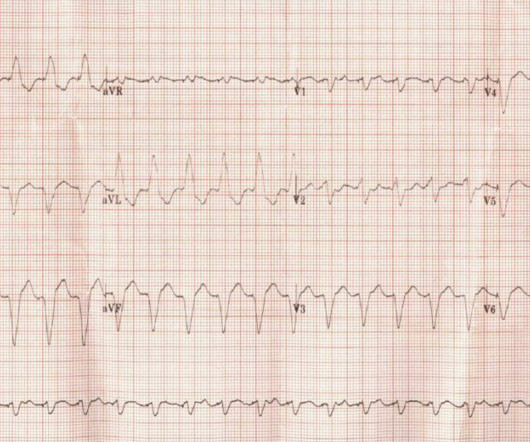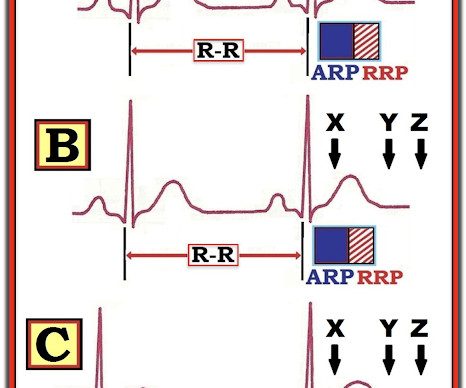Lab case 450
EMergucate
SEPTEMBER 16, 2024
10-years-old asthmatic boy, presented with croupy cough and wheezy chest. His blood gases showed the following: PH = 7.

EMergucate
SEPTEMBER 16, 2024
10-years-old asthmatic boy, presented with croupy cough and wheezy chest. His blood gases showed the following: PH = 7.

Core EM
SEPTEMBER 16, 2024
The Case A 96-year-old female with a history of coronary artery disease, hypertension, and complete heart block status post dual-chamber pacemaker (remote) presents to the ED by EMS with generalized weakness and lethargy. EKG Show Details EKG Characteristics Rate 130 Rhythm Wide Complex Tachycardia, Paced Intervals QRS 180, QT/QTc 406/596 Axis Left axis deviation ST Segments Non-specific Additional Features Paced Rhythm with LBBB morphology Diagnosis Pacemaker-Mediated Tachycardia Questions What
This site is protected by reCAPTCHA and the Google Privacy Policy and Terms of Service apply.

EMCrit Project
SEPTEMBER 16, 2024
There is more than one form of differential gas exchange on VA ECMO--remember differential ventilation! EMCrit Project by Katrina Augustin.

First 10 EM
SEPTEMBER 16, 2024
Readers of First10EM will know that I spend way too much time on PubMed searching the medical literature. I use the website daily. It is probably the most used link on my computer. Despite that, I am more than willing to admit that PubMed – and specifically the search function – sort of sucks. It […] The post Using AI to improve scientific literature search results appeared first on First10EM.

Dr. Smith's ECG Blog
SEPTEMBER 16, 2024
Written by Magnus Nossen — with edits by Grauer The tracings in today’s case is from a patient in his 80s being admitted due to dyspnea. Below is the presentation ECG. What do you think? The above ECG shows sinus rhythm. There is one premature atrial contraction which is blocked and this causes a short pause. The following sinus P wave conducts with a slightly shorter PR interval.

FOAMfrat
SEPTEMBER 16, 2024
In this podcast, we discuss the nuances and strategy of the T1 ventilator with RRT, Joe Hylton. Whether you're a paramedic or a healthcare professional involved in critical care transport, understanding the nuances of this advanced ventilator is essential to safe and effective patient transport. We break down the pressure-controlled ventilation with volume adaptive options and offer practical guidance on managing obstructive lung conditions like asthma during transport.

ALiEM
SEPTEMBER 16, 2024
A 94-year-old female with a past medical history of hypertension, coronary artery disease, chronic venous stasis, and permanent pacemaker placement initially presented to triage complaining of left hip pain in the setting of a fall shortly prior to arrival. Upon further evaluation, she endorsed developing sudden bilateral lower extremity weakness causing her to fall to the floor.
Paramedicine Now brings together the best content for paramedicine professionals from the widest variety of thought leaders.

EM Literature of Note
SEPTEMBER 16, 2024
Electronic health records, data warehouses, and data “lakes” are treasured resources in this modern era of model training. Various applications of precision medicine, “digital twins”, and other predictive mimicries depend on having the cleanest, most-accurate data feasible. One of these data sets is “ All of Us “, maintained by the National Institute of Health.

EMDocs
SEPTEMBER 16, 2024
Author: Joshua Lowe, MD (EM Attending Physician, San Antonio, TX) // Reviewed by: Alex Koyfman, MD (@EMHighAK); Manpreet Singh, MD (@MPrizzleER); Brit Long, MD (@long_brit) The fluorescent lights above cast a clinical pallor over the bustling ED. A cacophony of sounds envelops you. The relentless beeping and chirping of monitors created a dissonant symphony.
Let's personalize your content